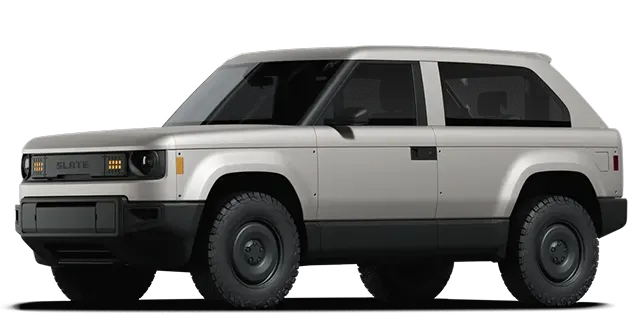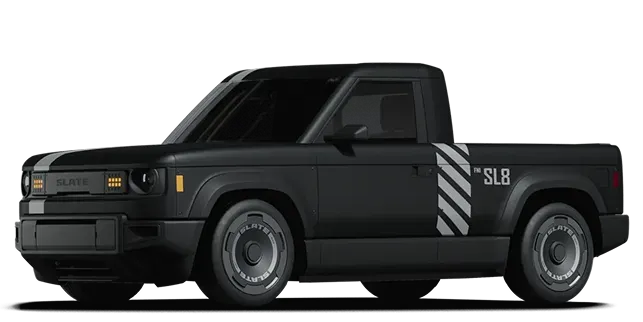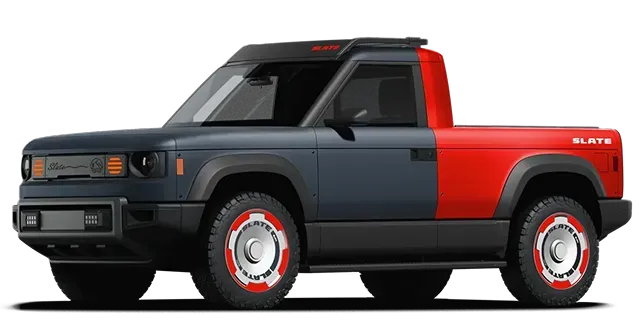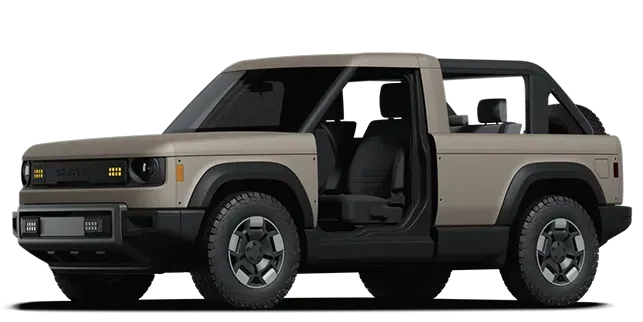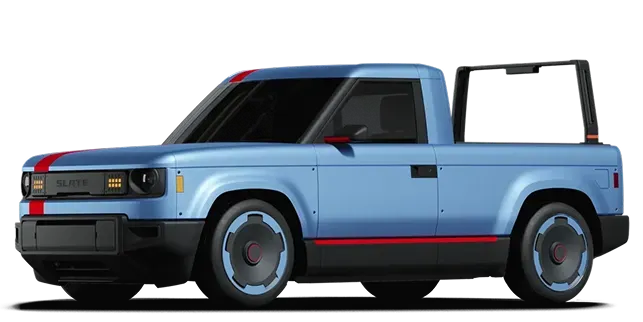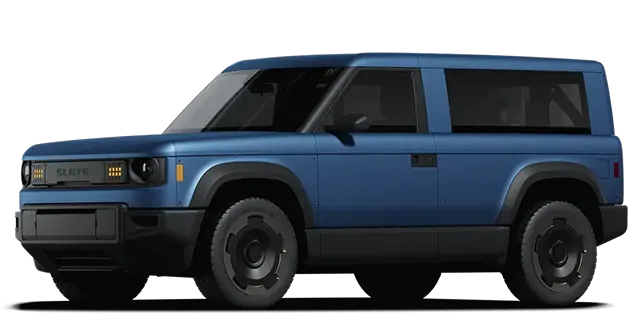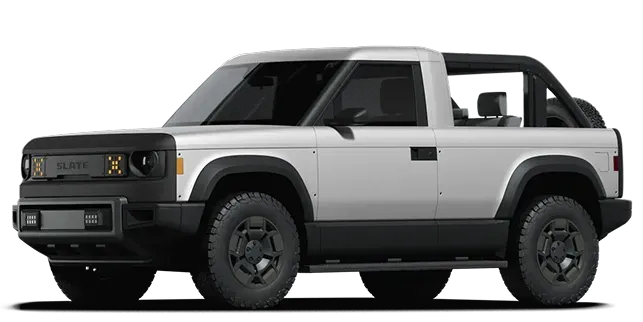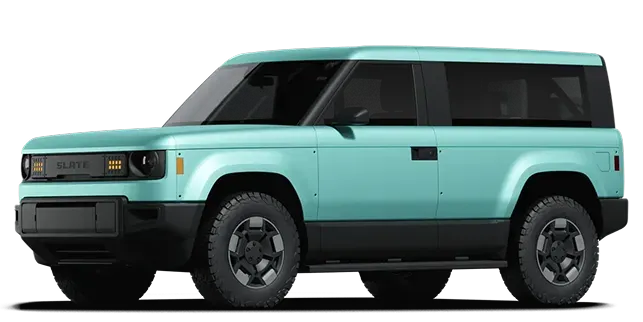Slate EV Truck Explained: A Pickup That Adapts to You
Published On 15/5/2025, 10:00:53 am Author Zeeshan Ali AqudusLearn from our co-founder how the Slate EV Truck could change the way India looks at pickup vehicles — modular, electric, and made to fit your life.

In 2019, I was on the leadership council of an open innovation platform where someone pitched the idea of a modular, autonomous, electric shuttle. I shared several insights that later made it into the final product — including how the vehicle would “talk” to people. We discussed things like anthropometric pareidolia — how subtle human-like features in machines help people connect with them.
The core reason it could become anything was its skateboard chassis. That flat base gave it flexibility — it could be a shuttle, a pod, a mobile store. Unfortunately, a mix of things pulled the project down. The biggest hit was the funding gap during COVID. That vehicle was Olli, built by Local Motors.
A few months later, Arrival launched something similar — a modular commercial EV platform built through microfactories. Their chassis could be used for trucks, vans, or even buses. It followed the same batch-production model. Both Local Motors and Arrival were chasing a shift, away from the “one fixed model” mindset. And they proved something important: modularity in vehicles wasn’t just possible. It made sense.
It made sense because of the unit economics, the ease of establishing modularity in electric drivetrains, and the component-based building approach. It allowed you to customize a car the way you customize software or even a home. But this would require a shift from the traditional mass manufacturing model of car production.
Vehicles like these, which are built from interchangeable modules and not delivered as a fully assembled, fixed product, often fall under the category of kit cars or kit vehicles. The idea is simple: instead of buying a finished vehicle off the lot, you get a base and optional components to build a version that suits your needs. It’s not a new concept. Kit cars have existed for decades, mostly built by hobbyists and enthusiasts.
But bringing that model into the mainstream, especially with electric vehicles, comes with serious challenges.
The biggest roadblock? Safety and regulatory approvals. In countries like India, for a vehicle to be road-legal, it must comply with safety norms laid out by bodies like ARAI (Automotive Research Association of India). Everything from crashworthiness, lighting, visibility, battery safety, to structural integrity must be tested and certified. And when the parts are modular, the permutations become endless. Testing each configuration separately isn’t feasible or affordable.
That’s why most kit cars stay niche — outside the mainstream market. They’re often limited to private roads, exhibitions, or racing circuits, unless specially approved. In countries like the U.S., there are separate kit car laws that allow limited registration under strict rules. But in India, such frameworks are still evolving.
How Kit Cars Can Solve Real Problems in India
In India, owning and maintaining a car is not always about passion. It is about utility, cost, and adaptability. Kit cars, if done right, can solve many problems that traditional vehicles cannot.
1. Affordability Through Phased Ownership Buying a full-featured car requires a heavy upfront investment. With a kit-based model, users can start with a basic version and add modules over time like better seats, infotainment systems, storage racks, or upgraded battery packs. This phased approach lowers the entry barrier for ownership.
2. Custom Use-Cases in Rural and Tier-2/3 Cities A small farmer might need a pickup for the harvest season but a passenger vehicle the rest of the year. A kit car with swappable beds or seating layouts can change roles as needed and become a personal car, goods carrier, or even a mobile shop. This multi-utility format fits well with India’s diverse economic situations.
3. Localized Manufacturing and Job Creation Instead of importing fully built cars or setting up massive factories, India can encourage local micro-factories to assemble kits regionally. This supports the Make in India initiative and creates jobs in manufacturing, assembly, and repair at the district level.
4. Reduced Waste and Better Repairability With traditional vehicles, if one part fails, the whole system suffers. Kit cars allow modular repairs, so users can swap out only the broken parts. This reduces waste and helps extend the life of the vehicle.
5. Personalization Without High Prices Indians like personalization, from bike stickers to seat covers. Kit cars let users build vehicles that reflect their needs or identity, without spending very high amounts.
Right Time. Right Place. Why Slate EV Makes Sense Now.
Five years ago, electric vehicles were a vision. Today, they are in people’s garages.
The Indian EV market has matured fast. From a few early adopters to thousands of EV owners across cities and towns, the shift is clearly visible. You now see electric cars being used for daily commutes, city deliveries, and even intercity travel. Ola, Tata, Mahindra, MG — all have pushed the adoption needle.
What changed?
People’s mindset: They now trust EVs.
Range anxiety is lower: More charging stations are available.
Subsidies and policies: FAME II and state EV policies made prices more realistic.
Total cost of ownership: EVs are cheaper in the long run.
Tech familiarity: People are used to electric bikes and scooters. Cars are the next step.
Earlier, launching a new EV brand felt too early. Now, it would be too late to not join.
In the US, Slate EV is priced around $25,000. If it gets locally assembled in India, the cost can come down quite a bit. It could be priced close to something like the MG Windsor but as an electric truck—similar in size and use to the Tata 207.
What’s interesting is that this one vehicle can serve many roles—like how the Tata Sierra was known. The Sierra was basically a Tata 207 truck that could also become a station wagon, similar to the Tata Estate. The difference with Slate is that it will be truly modular.
The Tata cars weren’t modular, so they couldn’t easily switch between roles. Slate changes that. It’s one vehicle that can adapt to different needs, making it a game changer for small businesses and everyday users alike.
Slate EV Specs
Here’s a quick look at Slate EV’s specs and key features:
Platform: Skateboard chassis with a flat battery pack under the floor. This means a low center of gravity and more space inside.
Battery: Around 75 kWh, giving an estimated range of 300 to 350 km on a single charge — enough for daily city drives and short trips.
Motors: Dual electric motors for all-wheel drive, providing decent power and good off-road capability.
Charging: Supports fast charging, reaching 80% charge in about 40 minutes. Also compatible with regular AC charging for overnight top-ups.
Modularity:
Swappable roof panels (hardtop, soft-top, or open-air)
Changeable wheel and tire sets (from 18” to 22”)
Removable seats and customizable interiors (2-seater, 5-seater, or van-style) Clip-on body panels and bed accessories for different work or adventure needs
Tech: Digital dashboard with customizable screens, drive modes (Urban, Overland), and software updates over the air.
Safety: Basic safety features like airbags, ABS, and traction control are included, with more advanced options planned as add-ons.
Slate EV Gallery
